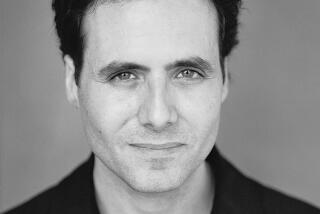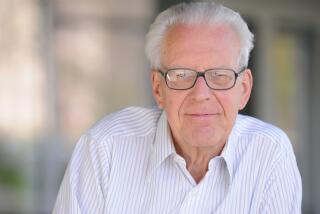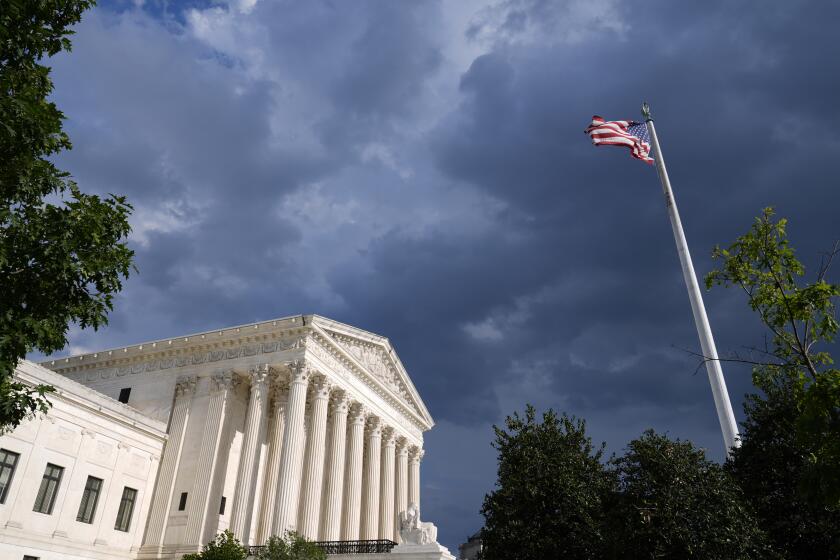Physicist disputed human link to global warming
- Share via
Frederick Seitz, the theoretical physicist who played a key role in founding the field of condensed matter physics but who may be better known for his roles as a government advisor and as the president of the National Academy of Sciences and Rockefeller University, died Sunday at a nursing home in New York City. He was 96.
No cause of death was announced by the university.
In recent years, Seitz had become controversial as a doubter of man-made global warming and for his efforts at channeling tobacco industry funds into medical research.
He was one of the “founding fathers” of condensed matter physics, said physicist Marvin Cohen of UC Berkeley. “He was a very important influence when the field was growing at a rapid rate.”
Condensed matter physics, originally called solid-state physics, involves the properties of bulk substances, such as a lump of silicon, as opposed to those of individual atoms. The field has blossomed in the last two decades with the advent of new materials with special properties, such as better photovoltaic cells and ever smaller memories for computers.
But the field was created by researchers like Seitz.
In the early 1930s, while he was a graduate student at Princeton University, Seitz and his mentor Eugene P. Wigner were the first to calculate the physical properties of bulk sodium based on the known properties of sodium ions.
Their technique, known as the Wigner-Seitz method, was later used by other researchers to calculate the energies of the so-called band gaps that electrons jump over to conduct a current in semiconductors -- the basis of the transistor -- and is considered the catalyst for the formation of solid-state physics in the United States.
In 1940, Seitz published the seminal text “The Modern Theory of Solids,” which was the bible of the field for many years, according to Cohen.
Seitz’s subsequent research involved the theory and properties of crystals and the diffusion of atoms into crystalline structures.
By the late 1950s, however, his major scientific contributions had ended as he moved more fully into administrative positions, first as chairman of the governing board of the American Institute of Physics, then as science advisor to the North Atlantic Treaty Organization.
In 1962, Seitz was elected president of the National Academy of Sciences, a part-time job that was nonetheless very time-consuming. He played a crucial role in restructuring the presidency into a full-time position and was the first to accept a term in that role.
In 1968, he was recruited as president of Rockefeller University, succeeding Detlev Bronk, who had initiated a broad expansion of the institution into a major university. But the poor performance of the stock market in the 1970s sharply restricted the funds available to sustain Bronk’s visionary expansion.
During Seitz’s tenure, however, he created a joint PhD-MD program with Cornell University and established the 1,000-acre Center for Field Research in Ethology and Ecology in Millbrook, N.Y.
Toward the end of his time at Rockefeller in 1978, he was approached by R.J. Reynolds Industries to oversee the disbursement of about $45 million in medical research funds. Virtually none of the money went to smoking-related research, but critics charged that the industry used the grants as a shield to demonstrate its commitment to science even while it was disputing evidence that smoking causes cancer.
Seitz later said that his father warned him as a child that smoking was linked to cancer and that he never changed his opinion. “It’s who spends the money that is important,” he said. He did, however, express skepticism about the effects of secondhand smoke.
In 1984, he co-founded the conservative George C. Marshall Institute in Washington with William Nierenberg and Robert Jastrow. From that bully pulpit, he spoke often and vigorously against the idea that global warming was caused by humans, savaging a 1995 report by the Intergovernmental Panel on Climate Change that argued the point.
In 1998, he urged fellow scientists to sign a petition backed by an Oregon group opposed to U.S. ratification of the Kyoto Protocol to limit emissions of greenhouse gases.
Seitz also argued that scientific evidence did not support the idea that chlorofluorocarbons damage the planet’s ozone layer.
The son of a German immigrant baker, Seitz was born in San Francisco on the Fourth of July in 1911. He enrolled at Stanford University as a biochemistry major, but soon changed to mathematics, completing his degree in three years. He received his doctorate from Princeton in two years.
During World War II, he worked on the Manhattan Project to build the atomic bomb and, after the war, he interviewed German scientists about their role in nuclear development on the behalf of the U.S. government.
During his career, Seitz taught at the University of Rochester, the University of Pennsylvania, the Carnegie Institute of Technology (now Carnegie Mellon University) and the University of Illinois.
He received a host of awards, including the National Medal of Science and the Karl Taylor Compton Award, the highest honor of the American Institute of Physics.
Seitz’s wife of 57 years, the former Elizabeth K. Marshall, died in 1992. He is survived by a son, Joachim Seitz of Palo Alto; three grandchildren; and four great-grandchildren.
--






